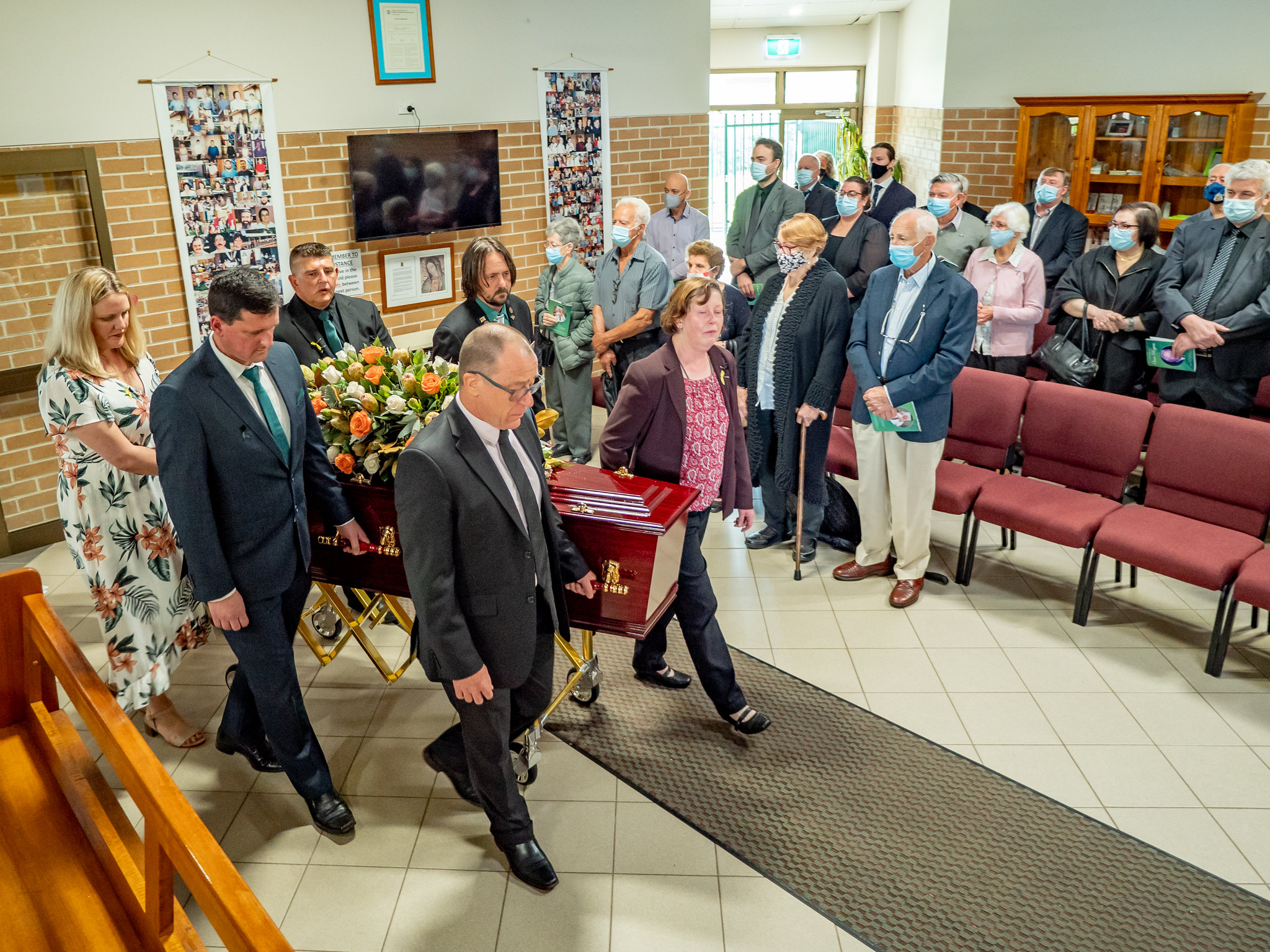The Funeral Liturgy - Part III
National Liturgical Council

The Funeral Mass and the Funeral Liturgy outside Mass both conclude with a Final Commendation and Farewell unless this is to be celebrated at the place of committal. "Although this congregation will disperse in sorrow, the mercy of God will gather us together again in the joy of his kingdom. Therefore let us console one another in the faith of Jesus Christ" (OCF 198).
This rite follows the prayer after communion at the Funeral Mass or after the Lord’s Prayer if Mass is not celebrated. The Words of Remembrance may precede it. "The Final Commendation is a final farewell by the members of the community, an act of respect for one of their members, whom they entrust to the tender and merciful embrace of God" (OCF 146).
The invitation to silent prayer "allows the bereaved and all present to relate their own feelings of loss and grief to the mystery of Christian hope in God’s abundant mercy and his promise of eternal life" (OCF 147).
The deceased person’s baptismal call to eternal life is brought to mind as the coffin is sprinkled with holy water. The body of the deceased is reverenced with incense because it has been the temple of the Holy Spirit.
The climax of the rite of final commendation is the Song of Farewell. Preferably this is sung during or after the sprinkling and incensing. This song affirms the hope and trust of the community in the power of Christ’s death and resurrection. ‘It should be sung to a melody simple enough for all to sing. It may take the form of a responsory or even a hymn. When singing is not possible, invocations may be recited by the assembly.’ (OCF 147)
The words and music need to be pastorally sensitive and embody the church's understanding of the mystery of death. Well-known hymns such as ‘ln Faith and Hope and Love’ can be used.
In the final prayer of commendation "the community calls upon God's mercy, commends the deceased into God’s hands, and affirms its belief that those who have died in Christ will share in Christ’s victory over death" (OCF 147).
Procession to the Place of Committal
The celebration does not end with the usual dismissal. The presiding minister says: "In peace let us take our brother/sister to his/her place of rest," and this invitation presumes that the community will accompany the mourners to the cemetery or crematorium.
The accompanying song is full of hope: 'May the angels lead you into paradise; may the martyrs come to welcome you and take you to the holy city, the new and eternal Jerusalem" (OCF 176).
In its entirety, the rite "acknowledges the reality of separation and affirms that the community and the deceased, baptised into the one Body, share the same destiny, resurrection on the last day" (OCF 146).
The Rite of Committal
"The Rite of Committal, the conclusion of the funeral rites, is the final act of the community of faith in caring for the body of the deceased member. It may be celebrated at the grave, tomb or crematorium, and may be used for burial at sea. Whenever possible, the Rite of Committal is to be celebrated at the site of committal, that is, beside the open grave or place of interment, rather than at a cemetery chapel" (OCF 204)
"The Rite of Committal may be presided over by a lay person if the priest is unavailable" (OCF 215). Lay ministers need to be prepared for and officially appointed to this role. In this ministry they represent the continuing support of the Church to the bereaved.
This article was originally published in ‘Christian Funerals’. © Diocese of Parramatta. 2004, 2007. Reprinted with permission.
